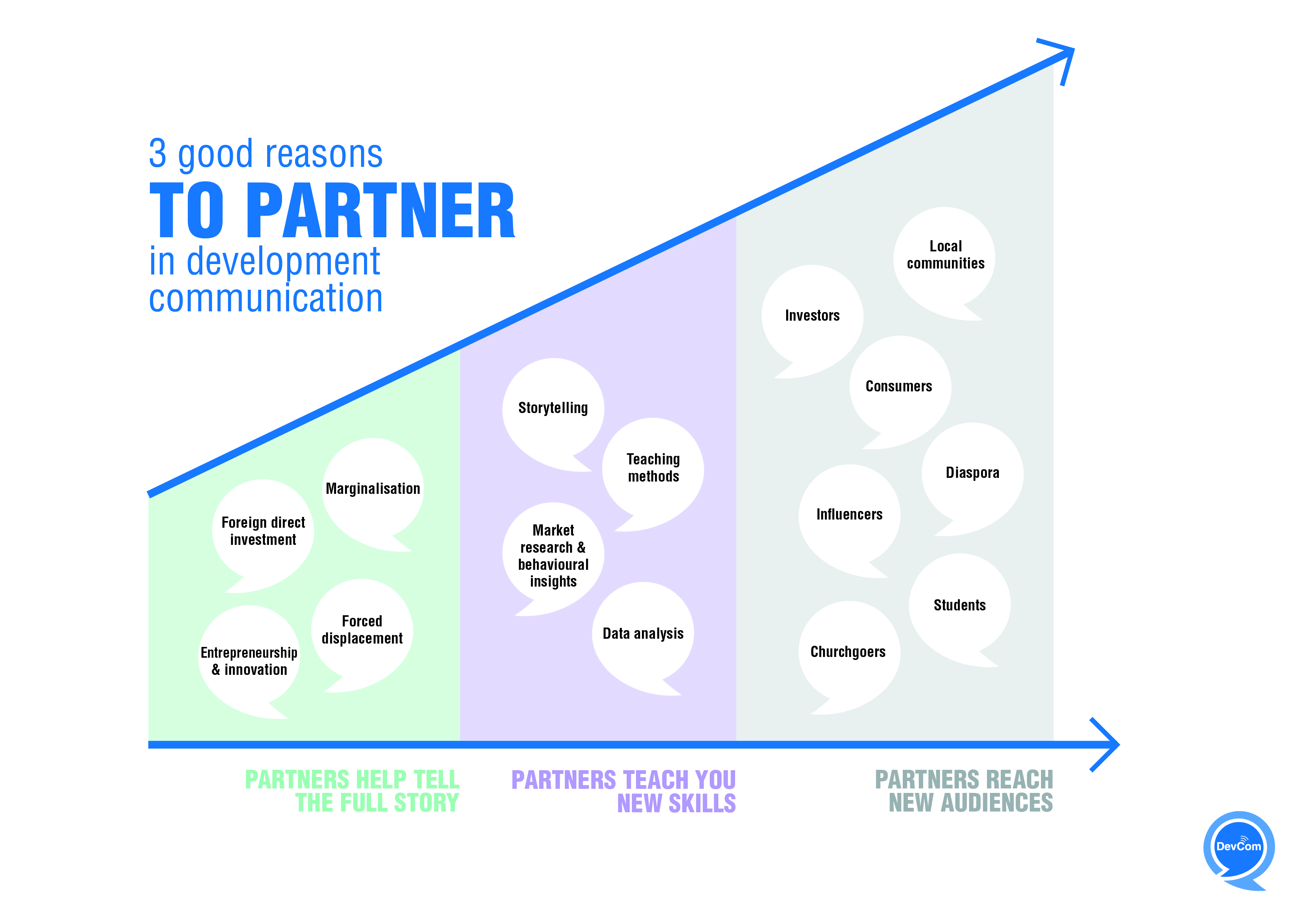What relationships do we need within and outside our organisations?
OVERVIEW
To achieve sustainable development, we all need to work together. Whether at home or abroad, whether at local, national or global levels, our partners have knowledge and solutions to share, and need to mobilise their communities into action.
The principle of partnership is as important for communicators as it is for policy makers. There are three strong reasons for development organisations to partner in public engagement.
- First, partners can help tell the full story. There are powerful stories to tell about development, but we may never hear about them if we only source stories internally.
- Second, partners enjoy trust and reach among key audiences. Many of the audiences we need to engage will take our messages more seriously if they come from peers.
- Third, partners have communication skills to share. Staying on top of latest technologies and opportunities becomes much easier when you can share lessons with innovative partners.
Partnering is an investment, but when partners have a common interest and share the communications burden, it can help communicators be more effective, and save money and time. A 2020 DevCom Survey on Partnering suggests that there is ample room for communicators to partner more strategically.

ADVICE & INSIGHTS
Communications teams in most development organisations consider partnerships to be an important part of their job. According to a 2020 DevCom survey, the three main ways to engage in partnerships are:
- Joint campaigns: partners collaborate to raise awareness or campaign for action at global, regional or national levels. Examples include Norway’s Enlightenment Trails and Italy’s #SDGsinAction campaign on World Food Day.
- Paid partnerships: partners are funded to run engagement projects or reach specific audiences. Examples include the UK Aid Match scheme or Ireland’s Development Education Strategy.
- Project promotion: communications efforts are integrated into to project contracts. One recent example is the 2XChallenge, through which diverse development banks promote investments in gender equality.
Development organisations need to become more strategic about partnering. Out of 18 respondents to the DevCom Survey, only 8 have a strategy to guide their partnerships. Similarly, only 8 have specific budgets for partnering. Only 2 respondents have a shared results framework with partners, while 8 do not systematically evaluate the impact of their partnerships.
The Survey also suggests that communicators could diversify their partnerships beyond traditional partners in civil society and multilateral organisations. For example:
- Businesses and associations can help reach investors and influence consumer behaviours.
- Municipalities can make sustainable development more relatable for local communities.
- Media outlets can promote accountability and public debate for sustainable development.
Communicators can also look for partners inside their organisations. Project managers in operational teams can be storytellers; charismatic leaders can be brand ambassadors; evaluations experts can provide advice for making communications strategies more evidence-based.
The key to successful partnering is shared ownership and mutual trust. At a DevCom event in 2020, participants found that communicators need to: choose partners wisely; work with intermediaries; and make sure that partners get enough credit for their contributions.
FURTHER READING
- Read the full 2020 DevCom Survey on Partnering in Public Engagement.
- Visit the SDG Essentials platform for insights on how businesses are engaging with sustainable development.
- Be inspired by Ampjar’s Guide to Collaborative Marketing.
EXAMPLES
Finland’s 2020 Voluntary National Report puts partnering first. Partners include: a film distributor, transport authorities, libraries and museums, and influencers.
In 2017, the Ibero-American General Secretariat (SEGIB) partnered with government officials and musicians to promote solidarity and co-operation. The #DiferentementeIguales music video has almost 10 million views.